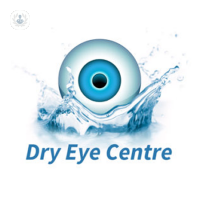Visual stress (Meares-Irlen syndrome)
Mr Robert Longhurst - Optometry
Created on: 01-08-2019
Updated on: 09-26-2023
Edited by: Conor Dunworth
What is visual stress?
Visual stress, also known as Irlen syndrome or Meares-Irlen syndrome, is not an optical problem, but a problem relating to perceptual processing (i.e. the brain’s ability to process visual information). For example, eye strain may result from reading or you may develop headaches from certain visual patterns.

Prognosis:
With proper treatment and visual aids, visual stress can be overcome. This syndrome tends to run in families.
Symptoms of visual stress:
Common symptoms of visual stress include:
- Light sensitivity (e.g. problems reading from a computer screen)
- Problems reading and writing
- Eye strain
- Headaches
- Feeling tired
- Watery eyes
- Problems with depth perception (clumsiness and an inability to judge distances well)
- Distortions in writing (words can appear to move or appear blurry)
Interestingly, many people who suffer from dyslexia also suffer from visual stress.
Medical tests to diagnose visual stress:
A thorough test by an optometrist must be carried out to rule out any possible underlying conditions that may have caused problems similar to visual stress.
What are the causes of visual stress?
There is still no scientific explanation of what causes visual stress, but as it is a problem relating to perception, many experts agree that the problem lies in the pathway from the visual cortex of the brain.
Treatments for visual stress:
As this problem is perceptual, rather than visual, standard prescription glasses cannot improve this condition. Some patients who complain of visual stress have found help in the use of specialist coloured overlays placed over reading text. These overlays help make reading easier and come in a variety of colours, as different patients find different colours, or tints, more or less helpful. Optometrists can help patients find the right colours for their needs. Another helpful tool for making reading easier are reading rulers. Lastly, coloured glasses are another option, however, these are costlier.
Which type of specialist treats visual stress?
Optometrists can treat patients suffering from visual stress.





